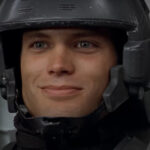“They had no idea what was fun or what would be exciting to play”.
Few anime films are held in as high regard as Akira. Katsuhiro Otomo’s 1988 adaptation of his 1982 manga of the same name typically tops most recommendation lists when it comes to introducing someone new to the world of Japanese animation, thanks to its expertly crafted detailed world, story, and characters. So it comes as no surprise then that video game developers have for the longest time tried to successfully bring the film into the world of video games and capitalize on its impact.
In 1988, the same year as the film’s release, the Kyoto-based developer Tose partnered with the publisher Taito to release a Japan-exclusive adventure game based on the magazine for the Nintendo Famicom, which received somewhat of a lukewarm response from magazines at the time like Famicom Tsūshin. Then, throughout the early-to-mid 90s, various Akira projects were said to be in development across various machines (including for the Sega Mega Drive / Genesis, Sega CD, SNES, and Game Boy), with only ICE Software’s poorly-reviewed releases for the Amiga and Amiga CD-32 game managing to make it to market in 1994.
Read the full article on timeextension.com
“They had no idea what was fun or what would be exciting to play”.
Few anime films are held in as high regard as Akira. Katsuhiro Otomo’s 1988 adaptation of his 1982 manga of the same name typically tops most recommendation lists when it comes to introducing someone new to the world of Japanese animation, thanks to its expertly crafted detailed world, story, and characters. So it comes as no surprise then that video game developers have for the longest time tried to successfully bring the film into the world of video games and capitalize on its impact.
In 1988, the same year as the film’s release, the Kyoto-based developer Tose partnered with the publisher Taito to release a Japan-exclusive adventure game based on the magazine for the Nintendo Famicom, which received somewhat of a lukewarm response from magazines at the time like Famicom Tsūshin. Then, throughout the early-to-mid 90s, various Akira projects were said to be in development across various machines (including for the Sega Mega Drive / Genesis, Sega CD, SNES, and Game Boy), with only ICE Software’s poorly-reviewed releases for the Amiga and Amiga CD-32 game managing to make it to market in 1994.
Read the full article on timeextension.com










